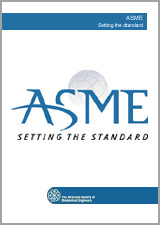We need your consent to use the individual data so that you can see information about your interests, among other things. Click "OK" to give your consent.

ASME STP-PT-077:2017
Development of Weld Strength Reduction Factors and Weld Joint Influence Factors for Service in the Creep Regime and Application to ASME Codes
Translate name
STANDARD published on 2017
The information about the standard:
Designation standards: ASME STP-PT-077:2017
Publication date standards: 2017
SKU: NS-1205239
Approximate weight : 300 g (0.66 lbs)
Country: American technical standard
Category: Technical standards ASME
Annotation of standard text ASME STP-PT-077:2017 :
The purpose of the ASME-EPRI research project is to develop the methodology and data to help establish weld strength reduction factors (WSRF) for service in the creep regime for a wide range of materials with applicability to various sections of ASME Boiler & Pressure Vessel Codes. A review of how various codes address creep behavior of welded structures and pressure vessels in the Task 1a literature review [1] showed that no clear consensus exists between or even within various sections of codes around the world. The range of approaches include: no rules, requirements to follow `good engineering practice,? simple factors on design irrespective of material, and factors on design which may depend on material, class/group of material, time, or combination of material and weld metal (based primarily on assessments of weld metal only data). ASME Section III-NH contains the most extensive set of rules for welded components based on design life, material and weld metal combination, and temperature. The origins of the strength factors applied in Section III-NH are primarily based, for stainless and nickel-based alloys, on the ratio of weld metal strength to base metal strength, the source for the chromium-molybdenum steels is not known, and the grade 91 values are biased on some cross-weld data with more recent data showing the assessment to be non-conservative at higher-temperatures and/or longer-times [1]. The applicability of these rules has been assessed for a few of the material-weld metal combinations by Corum [2] for a large body of structural `feature? tests, and the results are provided in Figure 1. The figure shows that in all cases, the application of the Section III-NH rules to welds produced conservative lifetimes relative to measured life in the test, suggesting a material/material class grouping approach is appropriate for design purposes.
We recommend:
Technical standards updating
Do you want to make sure you use only the valid technical standards?
We can offer you a solution which will provide you a monthly overview concerning the updating of standards which you use.
Would you like to know more? Look at this page.



 Cookies
Cookies
